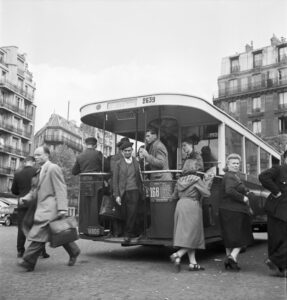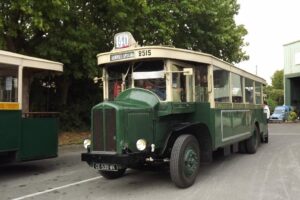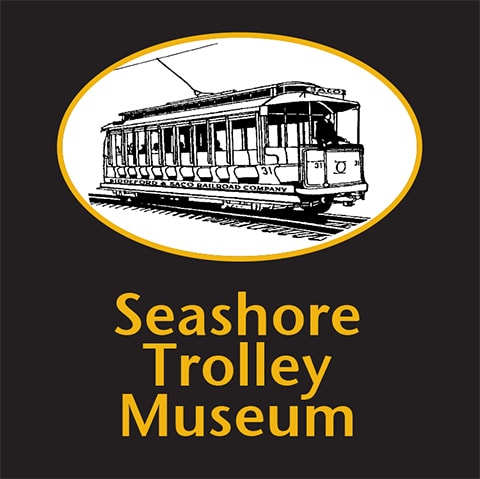
No. 2052 in Paris, 1950; Allan Hailstone photo.
Operating History: Paris began using motorized buses in the early 1900s, replacing horse drawn omnibuses that remained in use until 1913. A system of trams (streetcars) also served Paris starting in 1890. In 1929, the city council decided to replace its trams with buses, with the last tram line closing in 1937. For the tram replacement, the Societe des Transports en Commun de la Region Parisienne (STCRP), acquired many of its new buses from Renault. For Paris service, Renault introduced its model TN4 (with four cylinders) in 1931 and its model TN6 (six cylinders) in 1932. No. 2052 is a model TN6A designed for suburban service. The Renault TN buses had an open platform on the rear where passengers boarded and left the bus and where the conductor stood and collected fares. Passengers could also stand on the open platform to smoke. The driver sat in a separate, forward compartment. The buses had the standard Paris paint scheme of dark green and cream. Open platforms were characteristic of Paris buses, first used in 1911 and incorporated in buses acquired through the 1930s. The Paris open platform buses ran into the 1970s. The green, open platform Renault buses became closely identified with Paris street scenes.
Gasoline shortages during the German occupation of Paris caused drastically reduced bus operation during World War II. After the war, all the model TN buses were refurbished. In 1948, the Regie Autononme des Transports Parisiens (RATP) assumed operation of the Paris bus system along with the underground Metro subway lines. The RATP retired the last open platform bus in 1971.
Museum Ownership: In 1964, Carson, Pire, Scott, a Chicago department store acquired No. 2052 and brought it to the U.S. for a promotion. The store applied a red, white and blue paint scheme, apparently inspired by the French flag. After the promotion, it donated the bus to the Museum of Transportation near St. Louis. The museum displayed No. 2052 and later put it in storage. In an Ebay auction in 2006, the Museum of Transportation sold the bus to Jeff Mitchell, a collector in Barre, MA. In 2007, Seashore purchased No. 2052 from Mr. Mitchell for the same price that he had paid.
Before purchasing No. 2052, the Seashore Trolley Museum had made earlier attempts to acquire a Paris bus. In 1986, a physician near Metz, France offered to donate a 1937 Renault bus from Paris, but Seashore was unable to pay the shipping cost. Then, in 1990, the Musee des Transports Urbain, near Paris, offered to donate a 1932 Renault TN6A bus to Seashore. As part of this proposed transaction, Seashore would help send a Boston PCC car to the French museum. Again, neither donation occurred due, in part, to the inability for the museums to pay shipping cost.
Current Condition: As of September 2021, No. 2052 is stored in Central car barn. The bus has some roof damage and interior water damage but is largely intact.

Restored sister coach No. 2515 at Musee des Transports Urbains, Chelles, France. Photo: Musee des Transports Urbains
 |
 |
 |
